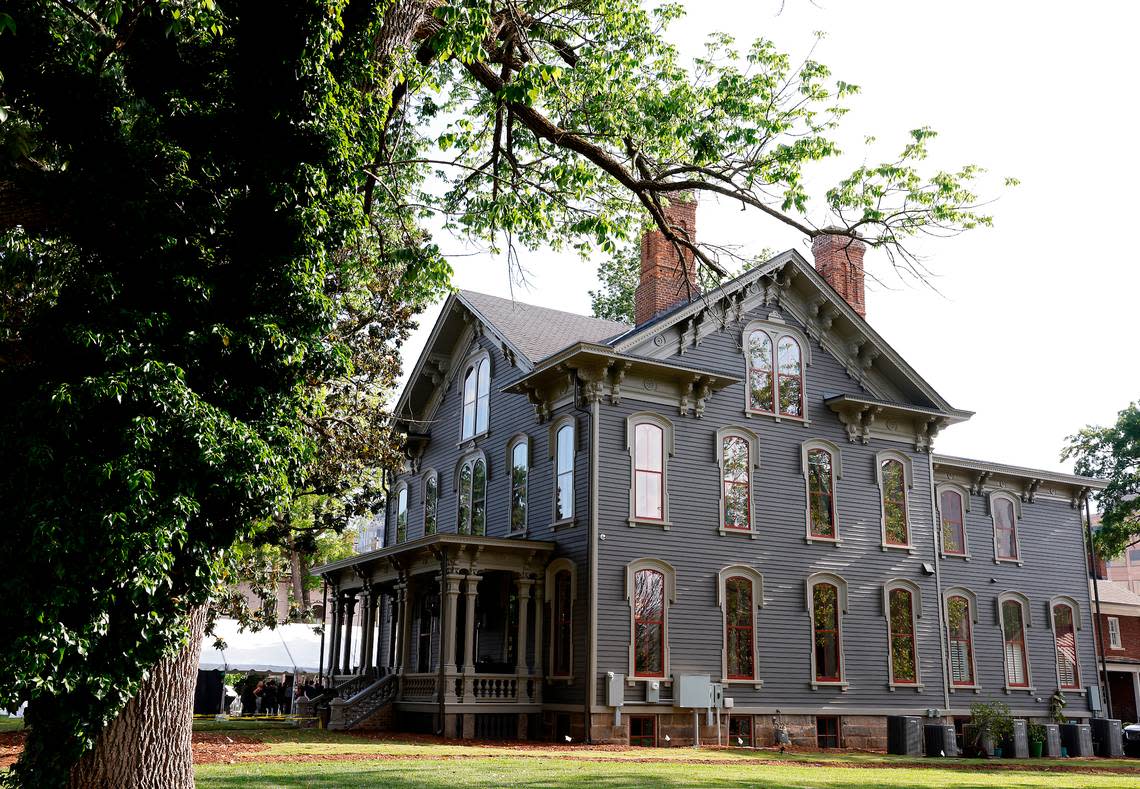The state of NC neglected this historic Raleigh mansion. They brought it back to life.
Tina Konidaris was trying to decide what to say.
Konidaris is a mortgage broker who serves on the board of CASA, a nonprofit group that builds affordable housing in the Triangle. She and her partner, Jeff Turpin, would be hosting a fundraiser for the group at the Andrews-Duncan House, the historic mansion in downtown Raleigh that they spent millions buying and restoring.
Finishing touches on the renovation continued this spring, and the CASA event would be the couple’s first big chance to show it off.
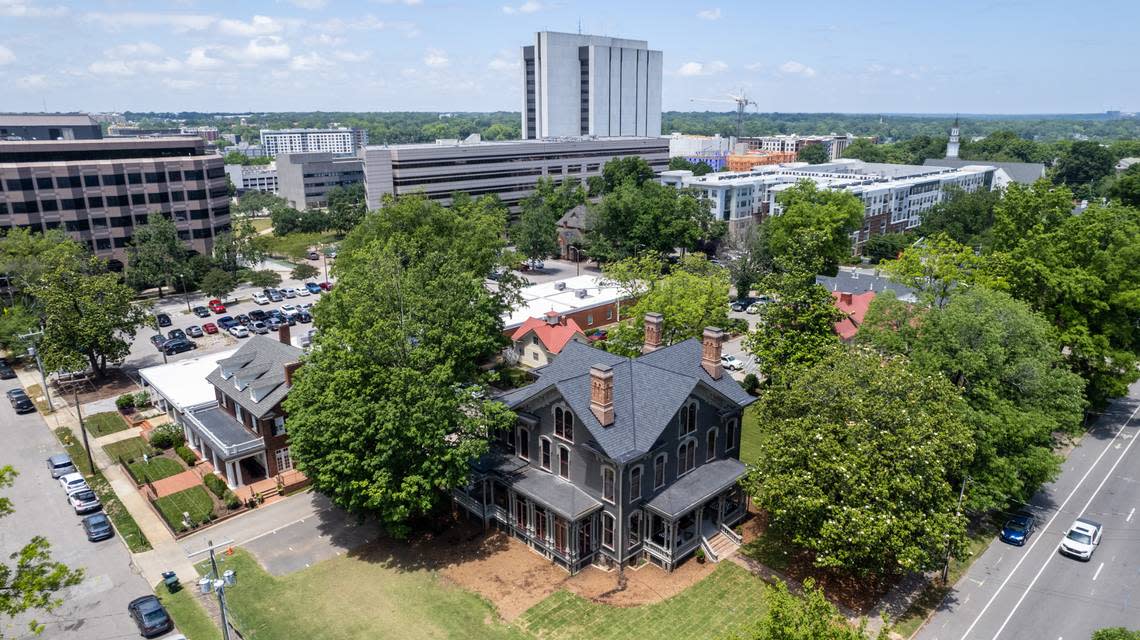
But Konidaris wrestled with how to relate the restoration of a Gilded Age mansion to the cause of affordable housing. Perhaps, she thought, it could be something about how the big old house had been abandoned and neglected and then given a second chance.
Alexander B. Andrews, a former cavalry captain in the Confederate Army who made his fortune building and running railroads, moved into his new three-story home in 1874. Andrews chose a lot at the corner of Blount and North streets, in what was becoming Raleigh’s most fashionable neighborhood. A decade later, the state began building the Executive Mansion a block away.
After Andrews died in 1915, the house was bought by Laura Duncan Pearson, the widow of a Durham tobacco industrialist who had married a Raleigh dentist. After divorcing the dentist, Laura Duncan converted the mansion into a rooming house in 1938 and kept tenants until she died in the late 1960s.
By then, the state had designs on the grand old mansions of Blount Street. A plan adopted by the State Capital Planning Commission in 1965 called for clearing several blocks of homes north and east of the new legislative building for museums, a visitors center, underground parking garages and offices for state workers in a park-like setting of lakes and plazas.
The plan showed a high-rise office building where the Andrews-Duncan House stood.
The state began carrying out some version of the plan, eventually creating Halifax Mall and the vast parking lots east of the N.C. Museum of Natural History. But a backlash from preservationists and others slowed progress, and the state began moving workers into some of the houses it had intended to tear down.
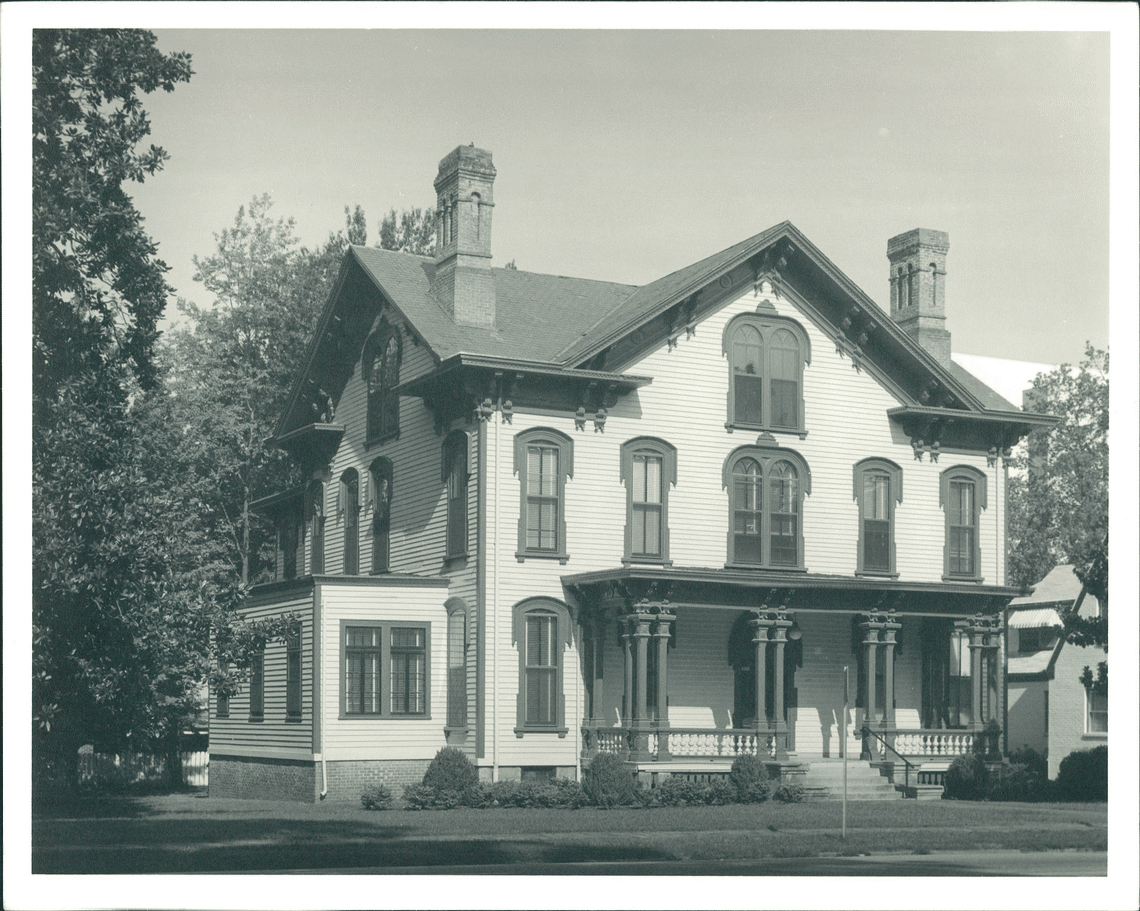
The state bought the Andrews-Duncan House in 1972 and used it for a division of the State Bureau of Investigation for decades. The SBI moved out when the state hatched a new plan to sell several blocks along Blount and Person streets to a private developer, who would restore the old homes and build apartments and townhouses on the empty lots. The development company broke ground in 2008, just as the Great Recession hit, eventually forcing it to leave much of the state’s plan undone.
The state then decided to sell a dozen of the old homes individually. The last one to find a buyer was the Andrews-Duncan House. When Konidaris and Turpin first stepped inside in 2017, it had been empty for about a decade.
Take a look inside the newly restored Andrews-Duncan House in downtown Raleigh
The house was ‘miserable’
It smelled of rot. Water had seeped in through holes in the roof, and the dingy walls were streaked with black mold. The front porch was covered in trash and blankets where someone had been sleeping, but apparently no one had been tempted to sleep inside.
“It was miserable,” Turpin said.
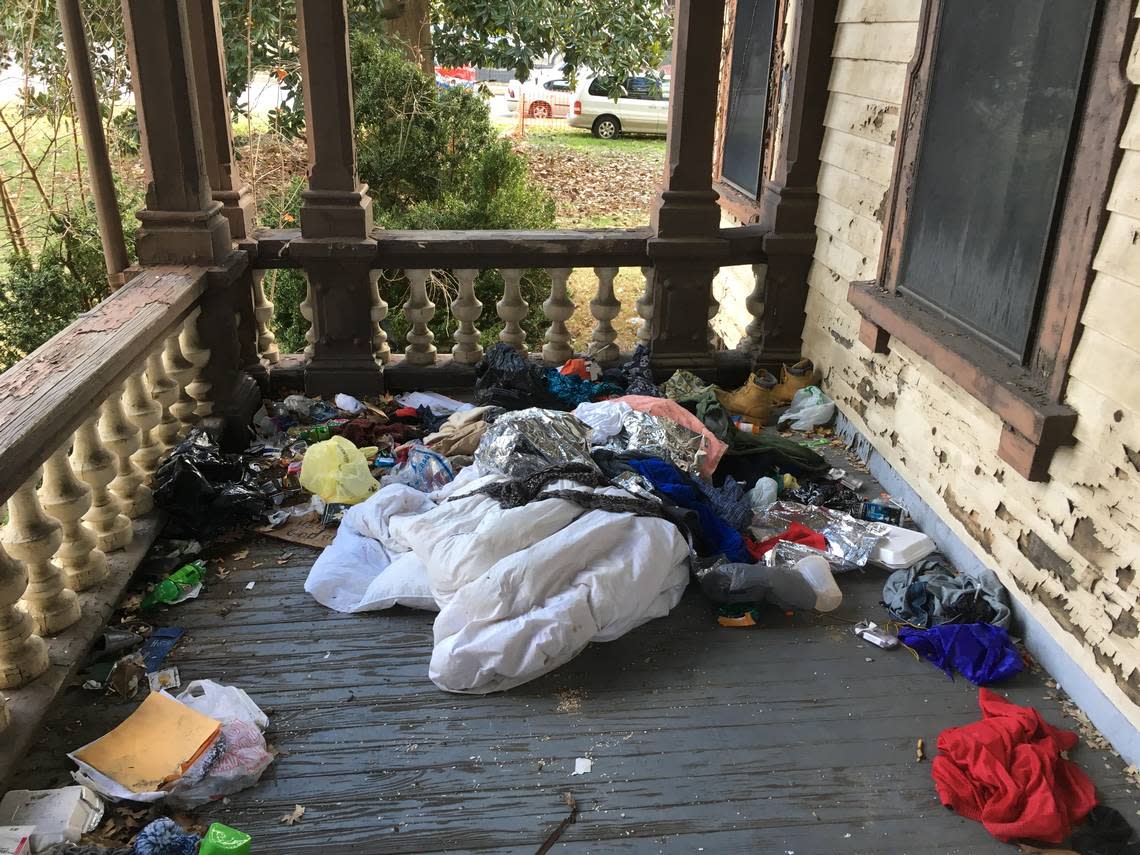
The raccoons didn’t seem to mind, though. The guy from the wildlife removal company called them “generational raccoons,” perhaps six generations under one roof. And they brought with them fleas, especially in the orange shag carpet on the ground floor. Meanwhile, bees had built an enormous hive in the north wall; the beekeeper who took them to his farm also recovered eight gallons of honey.
Konidaris and Turpin were undeterred. The windows were grimey but intact, as was most of the interior wood work. The original 13-foot-tall front door, with its etched glass, also survived, as did the railings on the staircases and several fireplaces. The front hall and the rooms on either side each had 14-foot-tall mirrors where Alexander Andrews once saw his reflection.
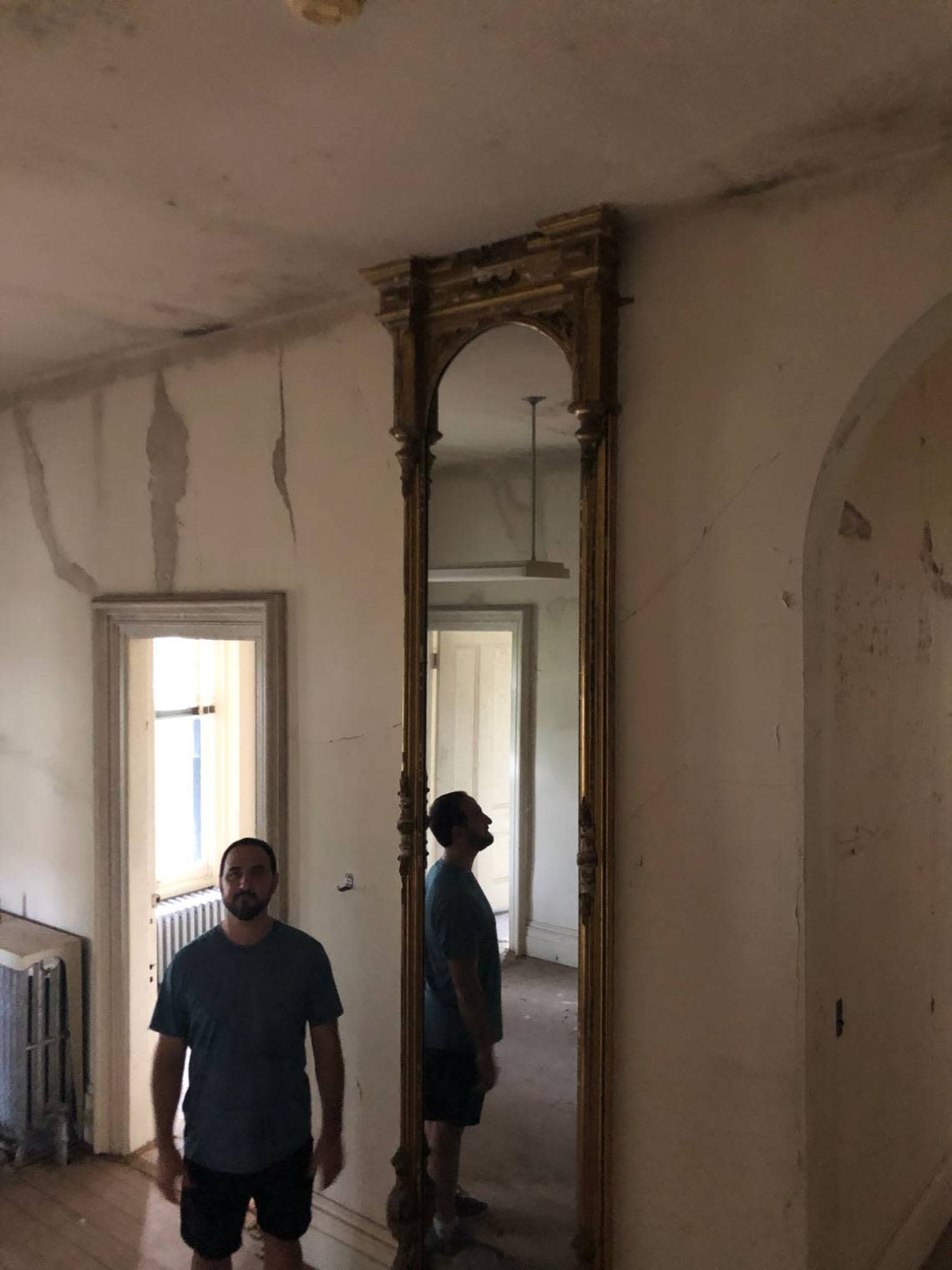
“You knew this was beautiful at some point, and it could completely be beautiful again,” Konidaris said, sitting in the living room where the flea-ridden shag carpet used to be. “You could see it.”
The size of the house — more than 10,000 square feet over three floors and a full basement — was also a draw. Konidaris and Turpin — each divorced and each with three children — had been dating for only a short time when she took him to see it.
“He, who has zero filter, said, ‘This would be the perfect house for a couple that has six kids,’” she said. “So within three to four months of us dating, we went under contract with the state, verbally, to buy this.”
The similarities with the Brady Bunch extended to Turpin’s housekeeper, whose name was Alice.
The renovation work began in late 2019 and was slowed by the COVID-19 pandemic and the labor and materials shortages that plague all construction projects these days. It wasn’t until February that the couple and their teenage children moved in.
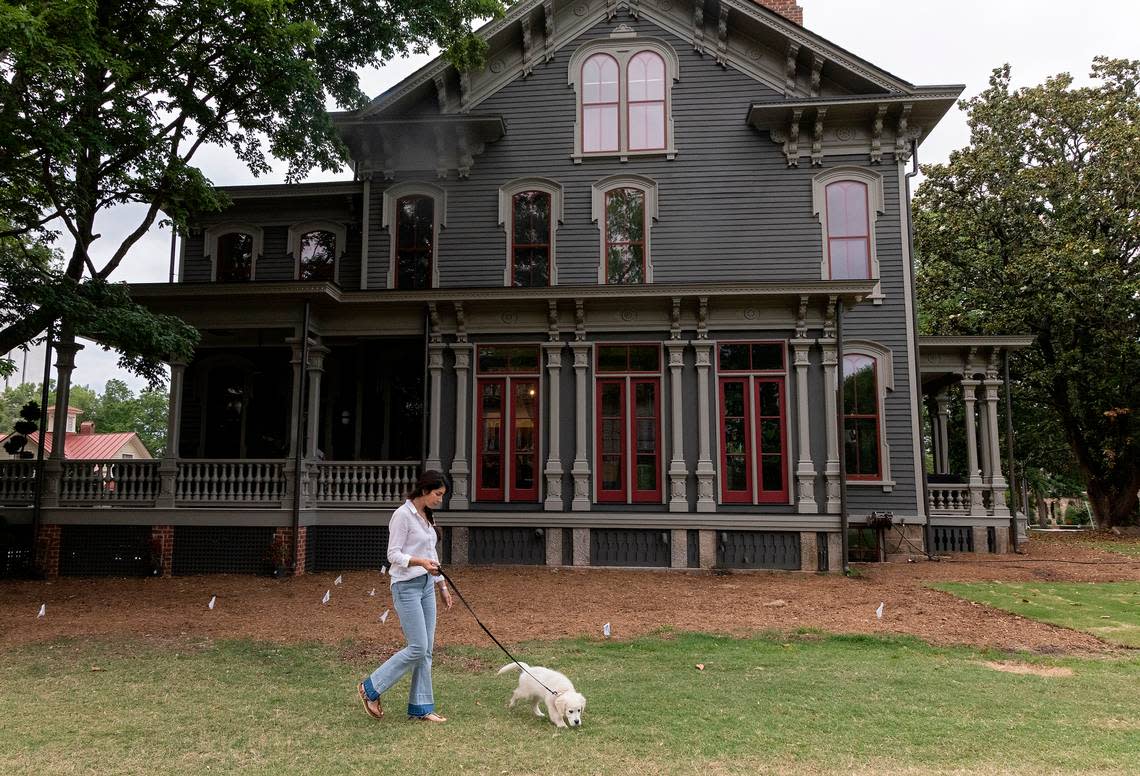
A historic house in a historic neighborhood
It’s not your typical neighborhood. The surrounding homes are occupied by businesses, event spaces or government offices, including the Lieutenant Governor’s Office across Blount Street in the Hawkins-Hartness House, completed in the early 1880s. The family looks out their dining room on the Heck-Andrews House, with its distinctive central tower topped by round windows, now the Raleigh headquarters of the N.C. Association of Realtors.
People don’t expect anyone to be living in the Andrews-Duncan House. Turpin says more than once he’s found someone sitting in their living room who thought they were visiting the clinic next door. It’s not uncommon for people to walk up to the house and press their faces to the windows to see what’s inside.
But the family loves being downtown, being able to walk to Publix, out to dinner or to get coffee. And aside from the occasional protest march or rally in front of the Executive Mansion, it’s quiet.
Turpin runs his medical device business from an office in the basement that he shares with a sauna and a massage table. There’s also shuffleboard, pool, foosball and a giant TV down there to try to keep the kids at home. The youngest starts high school in the fall, the oldest has finished a year of college. The couple hopes the house will be a focal point for them and their kids and families for years to come.
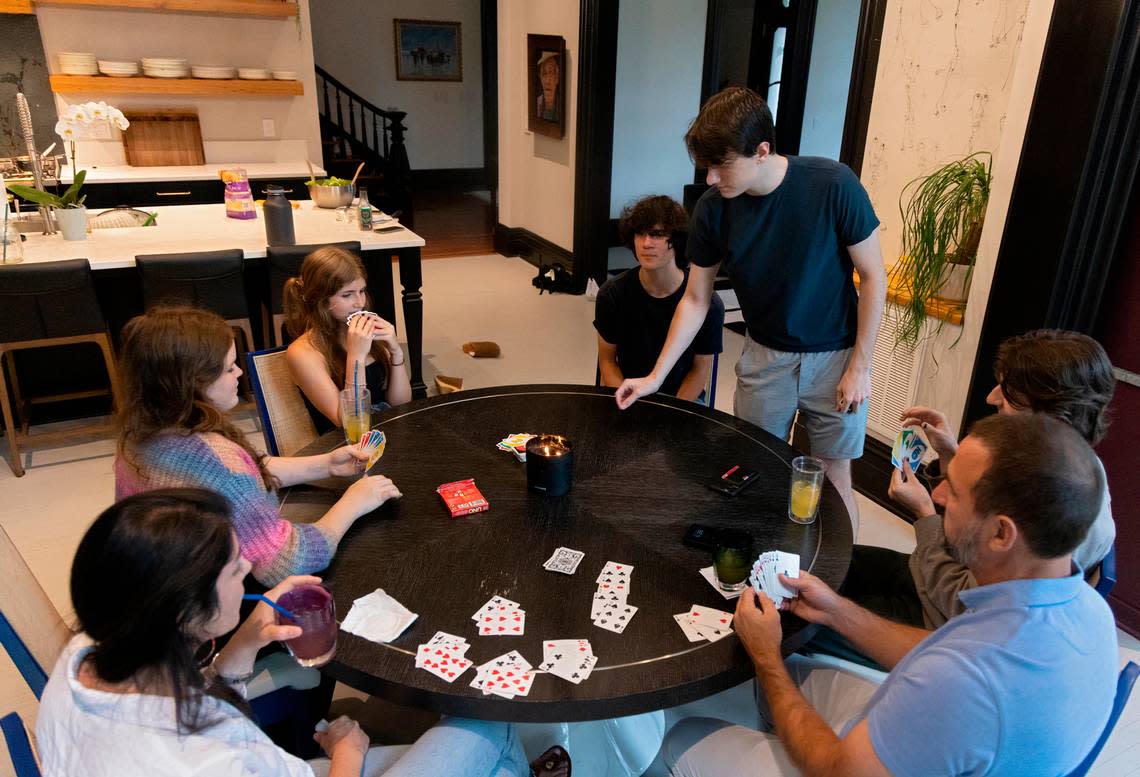
For preservationists, the restoration of the Andrews-Duncan House is a milestone and a relief. After the house was threatened with demolition, it was added to the National Register of Historic Places and declared a Raleigh Historic Landmark in 1972.
But it was only after it and the other state-owned houses were sold back to private owners that they could be truly restored and cared for, said Myrick Howard, president of Preservation North Carolina. Howard will retire this summer after 45 years at Preservation NC and says helping persuade the state to sell the homes in the Blount Street Historic District is among his proudest accomplishments.
Ian Dunn, an archivist with the state, published photos and research on the Andrews-Duncan House on the Goodnight Raleigh blog. One of his posts, in 2018, was titled, “Andrews-Duncan House Back from the Brink.”
“I’m thrilled to see this very important piece of Raleigh’s architectural history back on its feet,” Dunn wrote in a recent email. ”Houses need occupants just as much as the occupants need shelter.”
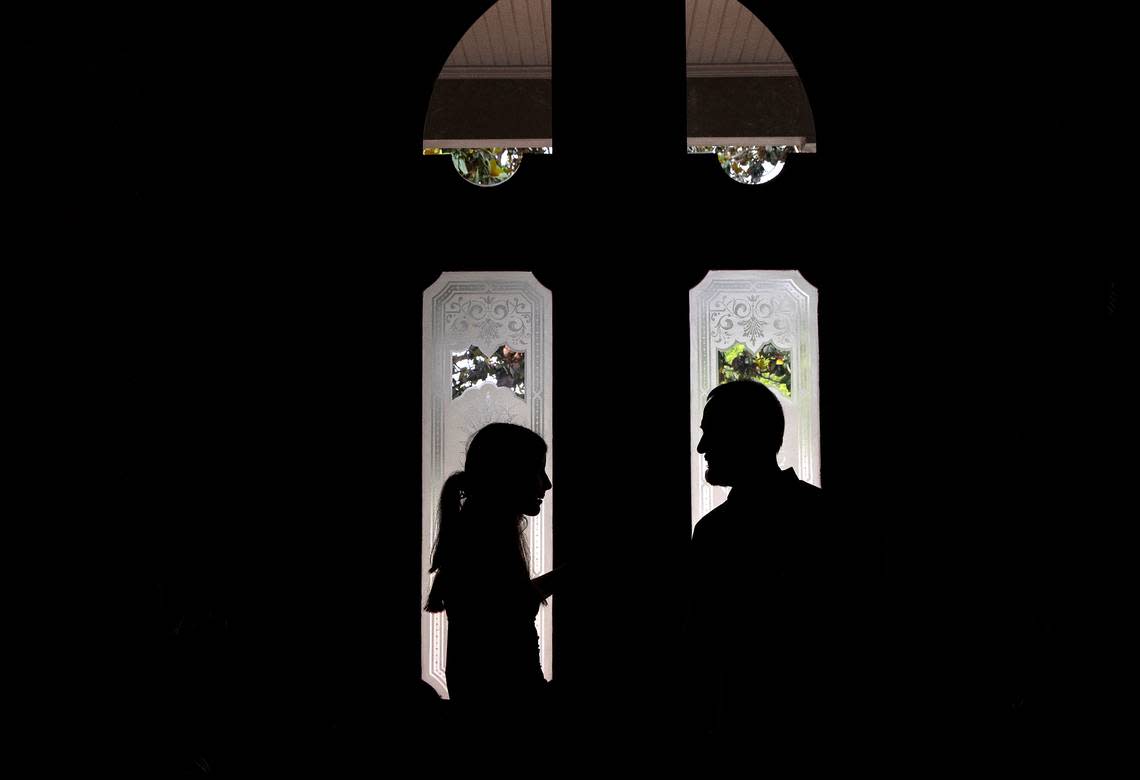
‘They’ve restored glory’
The CASA fundraiser took place on a warm Tuesday night in May. Dozens of people, many with ties to home building and real estate, mingled under a tent in the side yard, sipping seltzer and wine and snacking on balsamic glaze chicken and mini-meatball subs. Jay Lewis, a regional president for Dream Finders Homes, referred to the crowd as “the pretty people in the Raleigh marketplace. I’m pretty sure it’s the one percenters.”

They took turns walking through the house, many looking up at the 14-foot ceilings when they stepped into the kitchen.
Thomas and Stella Walton lived in nearby Oakwood for 12 years before recently moving out of the neighborhood. They watched as the paint peeled and the porches and eaves began to give way on the state-owned houses along Blount and nearby Person streets.
“Sitting on the outskirts of such a beautiful historic neighborhood, it was just sinful that these buildings were in that condition,” Thomas Walton said. “And God bless Tina and Jeff for taking this on as a mission. They’ve restored glory.”
Everett McElveen, CASA’s CEO, was seeing the house for the first time. His first words as he walked in were that it looked like something out of Southern Living magazine.
McElveen said he didn’t see any irony in holding a fundraiser for affordable housing in such a showplace.
“I think it’s the recognition that we’re all in this together,” he said. “If you have an interest in the community, then it’s fitting. It doesn’t really matter where you’re coming from. It’s whether you have that compassion for your neighbors.”
Konidaris spoke outside, at the edge of the tent, and started by saying what was surely on everyone’s minds.
“It’s a ridiculously big house,” she said. “Even with six kids, it’s kind of a big house. But we’re happy to be the caretakers of this home, and that’s really what we consider ourselves.”
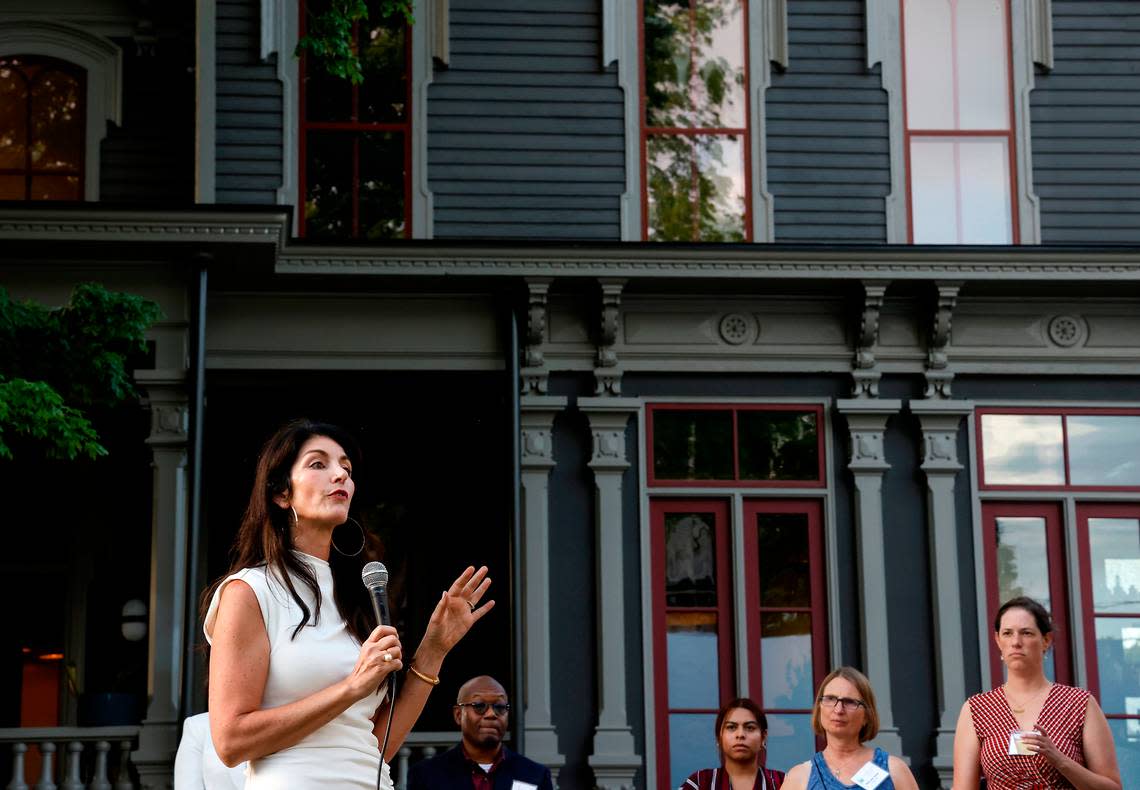
Konidaris then told a story about a rough patch she went through as a teenager in Kernersville, when another family had to take her in. When that family couldn’t care for her, another stepped in and provided everything she needed to finish her senior year of high school and prepare her for college.
It was luck, she said, that the second family was there for her. And not everyone is so lucky, which is where organizations like CASA come in.
Then she turned back to the house, and how she and Turpin were able to show it love, attention and care that “transformed it into the gorgeous lady that it is now.”
“And I want you all to think about that when it comes to people,” she continued. “These people, they are in situations that maybe they have been a part of causing. Maybe they have nothing to do with it. Maybe it is just really crappy circumstances. But they, too, could have a second life, just like this house has.”
The event at the Andrews-Duncan House raised nearly $67,000 for CASA.
